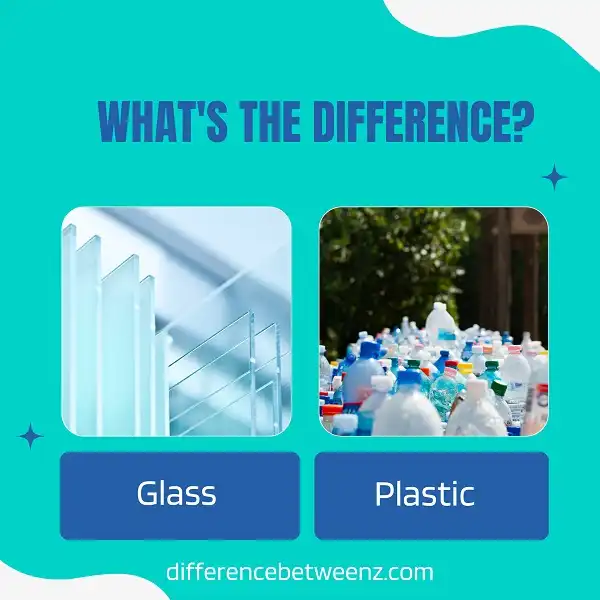Differentiating between glass and plastic is simpler than one might think. Both are materials made from different elements, but it is their similarities and differences in manufacturing that set them apart. Glass is created by fusing sand with other ingredients while plastic is a polymer derived from oil or natural gas. The way these materials are formed affects their properties and performance.
Glass is heavier but more brittle while plastic is lighter yet can bend more easily. In terms of environmental impact, glass production creates less hazardous waste, while the manufacture of plastic emits pollutants into the air and water supply.
What is Glass?
Glass is an inorganic material that is typically brittle and transparent. It is made by melting silica sand, soda ash, and limestone at extremely high temperatures. Glass can be molded into a variety of shapes and is used in everything from windows to drinking glasses. Glass is also recycled back into its original form, making it one of the few materials that can be reused over and over again. Glass is an amazing material that has a wide range of uses. It is strong, yet fragile; see-through, yet reflective, and has been used by people for centuries.
What is Plastic?
Plastic is a synthetic or semi-synthetic organic polymer that is malleable and can be molded into nearly any shape. Plastic is made from various kinds of oil, usually petroleum. Plastic products range widely, from the plastic wrap used in food packaging to the polyester fabric in clothing to the tiny microbeads found in some cosmetics and soaps. Plastic has many benefits; it is durable, lightweight, and easy to mold into various shapes.
However, it also takes centuries to decompose, and when it does break down, it releases harmful chemicals into the environment. As a result, plastic pollution is a major environmental problem. According to some estimates, there will be more plastic than fish in the world’s oceans by 2050 unless we take action to reduce our use of plastic.
Difference between Glass and Plastic
Glass and plastic are both popular materials for a wide variety of products. Glass is made from natural ingredients, while plastic is made from synthetic materials. Glass is 100% recyclable, while plastic can only be recycled a few times before it needs to be landfilled. Glass is heavier than plastic, so it often costs more to ship. Glass is also more fragile than plastic, so it requires more careful packaging. Plastic is less likely to break than glass, but it can scratch easily.
Plastic is also more flexible than glass, so it can be moulded into different shapes. Glass can be coloured, but plastic can be made in any colour. Glass is see-through, while plastic can be opaque or translucent. Glass can withstand high temperatures, while plastic melts at high temperatures. Glass conducts heat well, while plastic is a poor conductor of heat. Glass is non-porous, while plastic is porous. Glass is smooth, but plastic can have a textured surface.
Conclusion
Glass and plastic are two materials that are commonly used in a variety of applications. Though they may seem similar, there are several key differences between the two materials. Glass is heavier and more brittle than plastic, but it also has a higher melting point. Plastic is less dense than glass and can be molded into various shapes, making it more versatile for different applications. Both materials have their pros and cons, so it ultimately comes down to what will work best for your specific needs.


